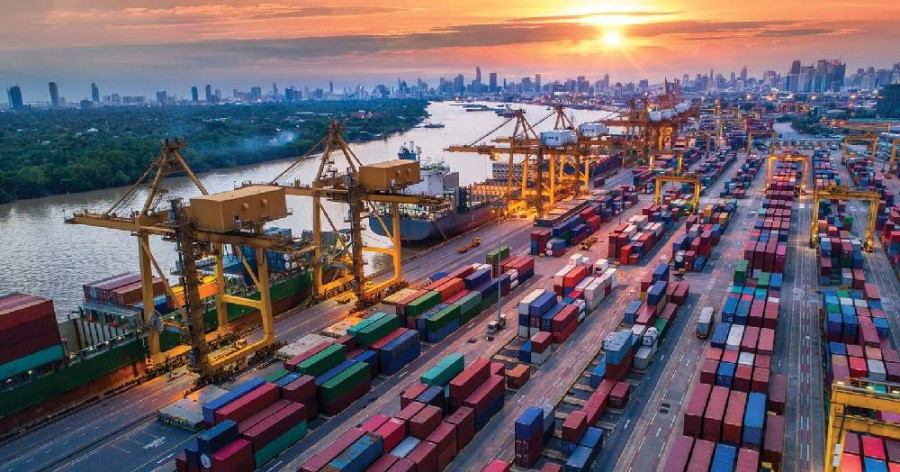"Chipageddon" is to blame for everything
For the automotive industry, such a sore point was the shortage of chips - the main constraints on temporary covid pandemic.
The semiconductor shortage is caused by a "perfect" coincidence of many circumstances:
- The COVID-19 pandemic is the main one and the root cause of several others.
- Rush demand for computers and electronics during the pandemic due to the transition to remote work/study.
- Growth in the production of medical equipment.
- Reduced production capacity for lockdown periods and other reasons related to the pandemic and seasonal sales.
- Concentration of production in one region. 87% of total production in Taiwan (TSMC, 54%), South Korea (Samsung) and China, Intel accounts for only 12% of semiconductor manufacturing capacity.
- Political conflict between the United States and China.
- Logistic problems. Due to the pandemic, the price of sea and air transportation has risen sharply, and the shortage of truck drivers in Europe has also affected.
- An abnormal cold in early 2021 in Texas, causing a fortune in this semiconductor manufacturing plant.
- A fire in the spring of 2021 at the Japanese chip factory Renesas.
- Drought in Taiwan, affecting TSMC operations, as large volumes of water are required to manufacture microchips.
- Lockdown in Malaysia - the world's largest hub (7% of global volume) for assembly and testing of chips.
- Lengthy production process. It takes up to three months to manufacture one chip.
Ports, drivers and tensions
Logistics problems are not only not being resolved, but due to the pandemic they are under very great pressure and even cause disruptions in supply chains. In the 50th week of 2021, container transport prices rose again, reaching another high. And Ningbo, one of China's port systems and the fourth largest in the world, has already announced that service charges will increase by 10% from 1 January 2022. Following it, prices may rise and other ports, which will further increase the cost of logistics and the goods themselves.
A situation exacerbated by strained trade and political relations between the US and China, as well as a huge shortage of truck drivers in Europe and England. And if you take into account that 87% of chip production is concentrated in the Asian region, and the US accounts for only 12%, and that the semiconductors produced go primarily to the phone manufacturer, it becomes clear how difficult it is for the European and American auto industry. So, by mid-December, the time for unloading ships in US ports had already reached 21 days.
Where is the auto industry "going"?
What should be done to cope with this problem?
There are three ways out:
- create new capacities for the production of chips;
- build new ports;
- reduce demand.
To reduce dependence on suppliers from Asia, the EU authorities have already announced that by 2030 they plan to occupy 20% of the semiconductor market in the United States. According to President Joe Biden, $50 will be invested in this industry. It is clear that the first and second solutions will take several years, and the consumer needs the car right now. Therefore, it remains only to follow the path of reducing demand - increasing the cost of automotive products and increasing delivery times after purchase.
Toyota and Tesla go their separate ways
A consolation prize can be established partnerships with microchip manufacturers. To date, this is best done by Asian and German automakers.
By the way, Toyota was better prepared than others for "chipageddon" for another reason. After the 2011 earthquake in Japan, which paralyzed the operation of many factories, the company stored a four-month number of important components, including semiconductors. While competitors were forced to reduce or stop production, Toyota's capacity was used by 90%. As a result, in 2021, Toyota overtook General Motors for the first time in car sales in the United States. And GM has been the undisputed leader in the home market for almost 90 years.
Tesla also goes its own way from the chip crisis being created. Firstly, the company builds vertical voltage integration, that is, it produces as many components as possible independently. Secondly, it increases orders "in reserve", and works very hard with suppliers. It is profitable and promising for manufacturers to cooperate with the growing company of Elon Musk, so all contracts are fulfilled within the deadline.
Price and demand are rising - sales are falling
In the United States, according to the Department of Commerce, in October, dealer funds of new and used cars and spare parts were:
- the lowest since the spring of 2012;
- 23% less than in October 2020;
- 40% less than in the pre-pandemic months.
Moreover, not only new cars have become more expensive. Wholesale prices for used cars increased by 44% in the United States compared to the same month a year ago.
In Russia, used car prices have also jumped up to 40%, and this may not be the limit yet. New cars will only come off, and some models are "understaffed" due to the chip crisis of the conveyor (for example, without cruise control and multimedia system). The terms of a new car after payment stretch in the Russian Federation up to six months or longer.
In the European Union, also against the background of limited supply on the market due to a shortage of semiconductor components, car sales in 2021 have been falling for several consecutive months. They decreased by 20.5% in November 2021, and this result was the lowest for November in the entire history of observations since 1993. In November, only Korean Hyundai "rose" well in the European market - by 20.9%.
And here is a list of automakers, led by the US, which reduced sales in the EU countries (in November 2021):
- Ford - 43.7%
- Jaguar Land Rover Group - 35.9%;
- Volkswagen Group - 33.7%;
- Mazda - 31.6%;
- Daimler - 28.3%;
- Nissan - 23.9%;
- Stellantis - 23.5%;
- Hyundai - 20.9%;
- BMW - by 18.6%;
- Honda - 17.8%;
- Renault Group - 12.9%;
- Toyota - 12.3%;
- Mitsubishi - 5.3%
As for the timing of deliveries of the cars themselves to world markets, it is clear that imbalance reigns here. The only question is to what extent this problem may grow in the future.























